Rick Steves:
Most tourists in Croatia focus on the coast. For a dash of variety, head inland to check out the Istria's hill towns. My favorite two are tiny, rugged, and relatively untrampled: the artists' colony of Grožnjan and Motovun, popular for its sweeping views.
Grožnjan is your trapped-in-a-time-warp Istrian hill town. Artfully balanced on the tip of a vine-and-olive-tree-covered promontory, Grožnjan is fun to wander and explore. Its stony, leafy, rough-cobbled lanes are lined with art galleries and truffle-and-olive-oil shops. It's the kind of place that invites you to get lost and leave your itinerary on your dashboard. Not long ago, Grožnjan was virtually forgotten. But now several artists have taken up residence here, keeping it Old World but with a spiffed-up, bohemian ambience.
Dramatically situated high above vineyards, Motovun (population: about 530) is the best known and most touristed of the Istrian hill towns. And for good reason: Its hilltop Old Town is particularly evocative, with a colorful old church and a rampart walk with spine-tingling vistas across the entire region. It's hard to believe that race-car driver Mario Andretti was born this tranquil little traffic-free hamlet.
Here was our route today, doing what RIck Steves' described above, plus additional stops described from his guide book. The route, without the stops, is 3 hr 11 min (104 miles).
As we turned inland from the coast it gets rustic, narrow and curvy from the get go.
Now entering our first stop:
At the town gate, we find script showing old Croatian geometric-character-type written language.
After leaving the first town, we're guided (by the book) to small modern memorial containing 3-dimensional versions of the ancient script language. This representation is just artistic-license to dramatize the old ways.
Wikipedia:
The Glagolitic script is the oldest known Slavic alphabet, generally agreed to have been created in the 9th century by Saint Cyril, a monk from Thessalonica. He and his brother Saint Methodius were sent by the Byzantine Emperor Michael III in 863 to Great Moravia to spread Christianity among the West Slavs in the area. The brothers decided to translate liturgical books into the contemporary Slavic language understandable to the general population (now known as Old Church Slavonic). As the words of that language could not be easily written by using either the Greek or Latin alphabets, Cyril decided to invent a new script, Glagolitic, which he based on the local dialect of the Slavic tribes from the Byzantine theme of Thessalonica.
-----------------------
Don't confuse this look with English neolithic sites, but it sure looks vaguely similar.
Wikipedia:
The Glagolitic script is the oldest known Slavic alphabet, generally agreed to have been created in the 9th century by Saint Cyril, a monk from Thessalonica. He and his brother Saint Methodius were sent by the Byzantine Emperor Michael III in 863 to Great Moravia to spread Christianity among the West Slavs in the area. The brothers decided to translate liturgical books into the contemporary Slavic language understandable to the general population (now known as Old Church Slavonic). As the words of that language could not be easily written by using either the Greek or Latin alphabets, Cyril decided to invent a new script, Glagolitic, which he based on the local dialect of the Slavic tribes from the Byzantine theme of Thessalonica.
-----------------------
Don't confuse this look with English neolithic sites, but it sure looks vaguely similar.
A preview of the next town, but first we detour a bit to grab some lunch, in Livade.
Pasta, with, you guessed it, truffles, and look at all those slices of real, actual truffle, not truffle oil. It's like eating mushrooms with 10-times stronger flavor. The owner of Konoba Dolina even treated us to some gratis after meal liquor (Gerri, the driver, gave up most of hers - why Tim is smiling a little wider).
We pass under the banner, headed up another hill.
Yes, the boyhood home of Mario Andretti - we thought he is Italian, and in fact he is, this part of Croatia was part of Italy from 1919-1947. As Yugoslavia came into being, ethnic Italians fled the region, and Mario's family ended up in Tuscany.
The views are amazing, even reminding us of our time in Tuscany, with lush agriculture and tiny villages.
After leaving Motovun (see the hilltop village in background), we crossed the valley northward, and climbed up doing a drive through of Oprtalj on our way to the next tour-able village (on the valley floor is Livade).
There was an excellent English written posting to give us the scoop on the history of the place.
A Venetian lion is spotted among the rocky walls.
Not the case, but these photos are almost as if they're before and after shots of a resurrected villa.
Now looking back up into the village from the back door gate.
At the edge of town are some historical descriptions of a railway from just over a 100 years ago.
Heading back to the car alongside the village, we see some rustic farming - this plants had the look of ancient corn stalks.
Still walking through (Završje) Grožnjan - looking across the valley at another hilltop town.
Still standing in (Završje) Grožnjan, taking in awesome views of vineyards on the slopes.
Heading out, our car just around the corner, we pause while Gerri uses Google-Translator to figure out the war memorial.
A long day of Istrian hill town touring is complete, we head southward to Rovinj.









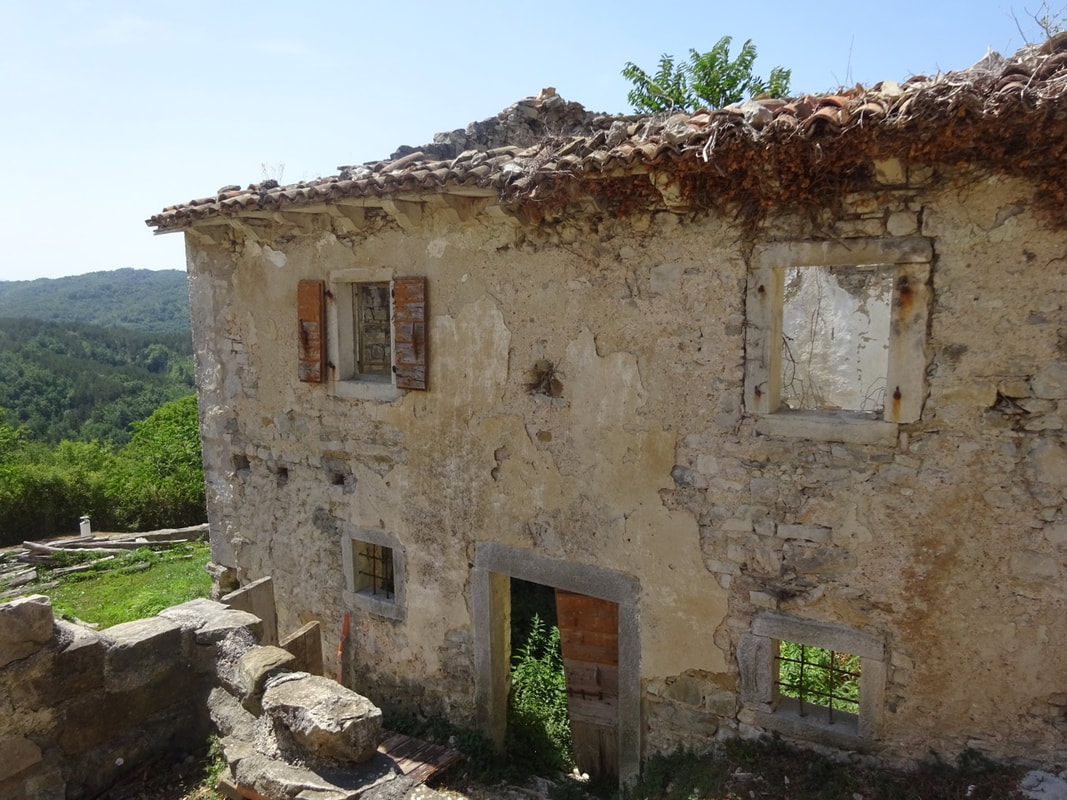




















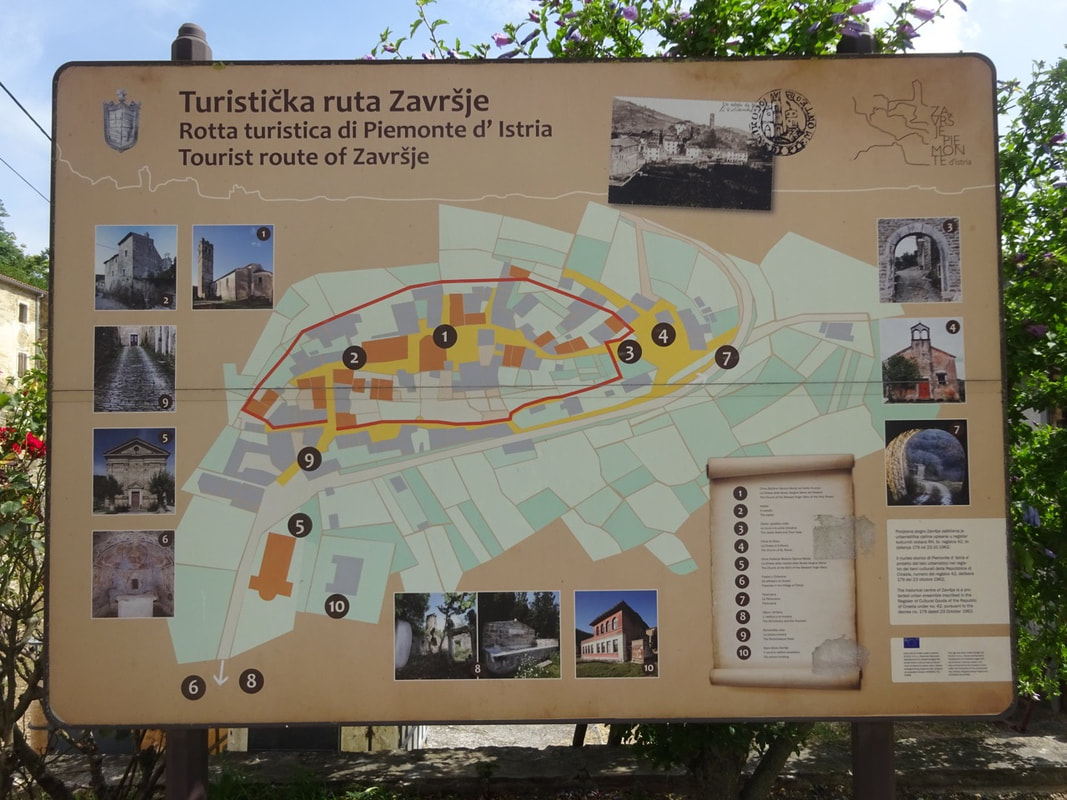














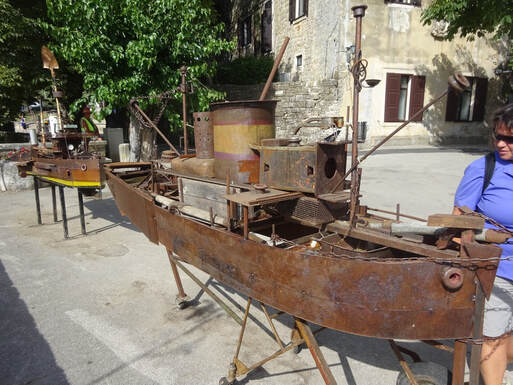



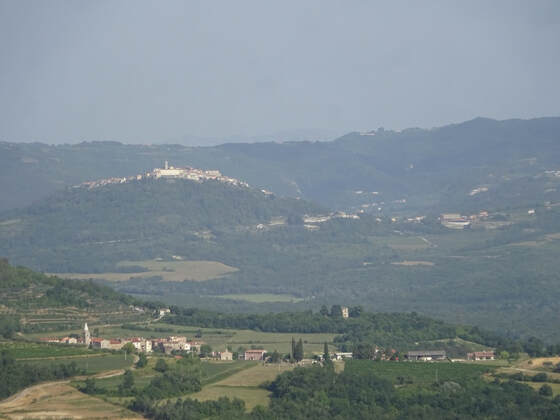

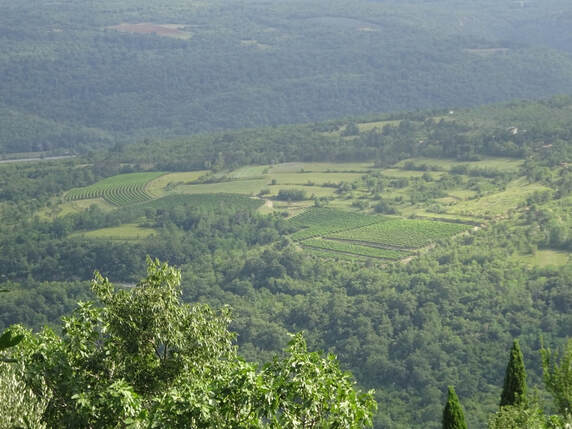










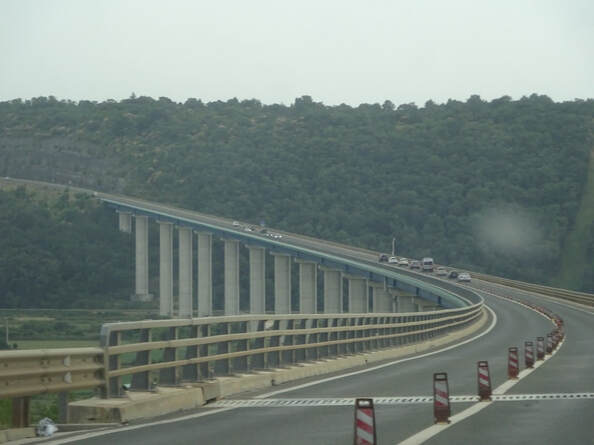
 RSS Feed
RSS Feed
